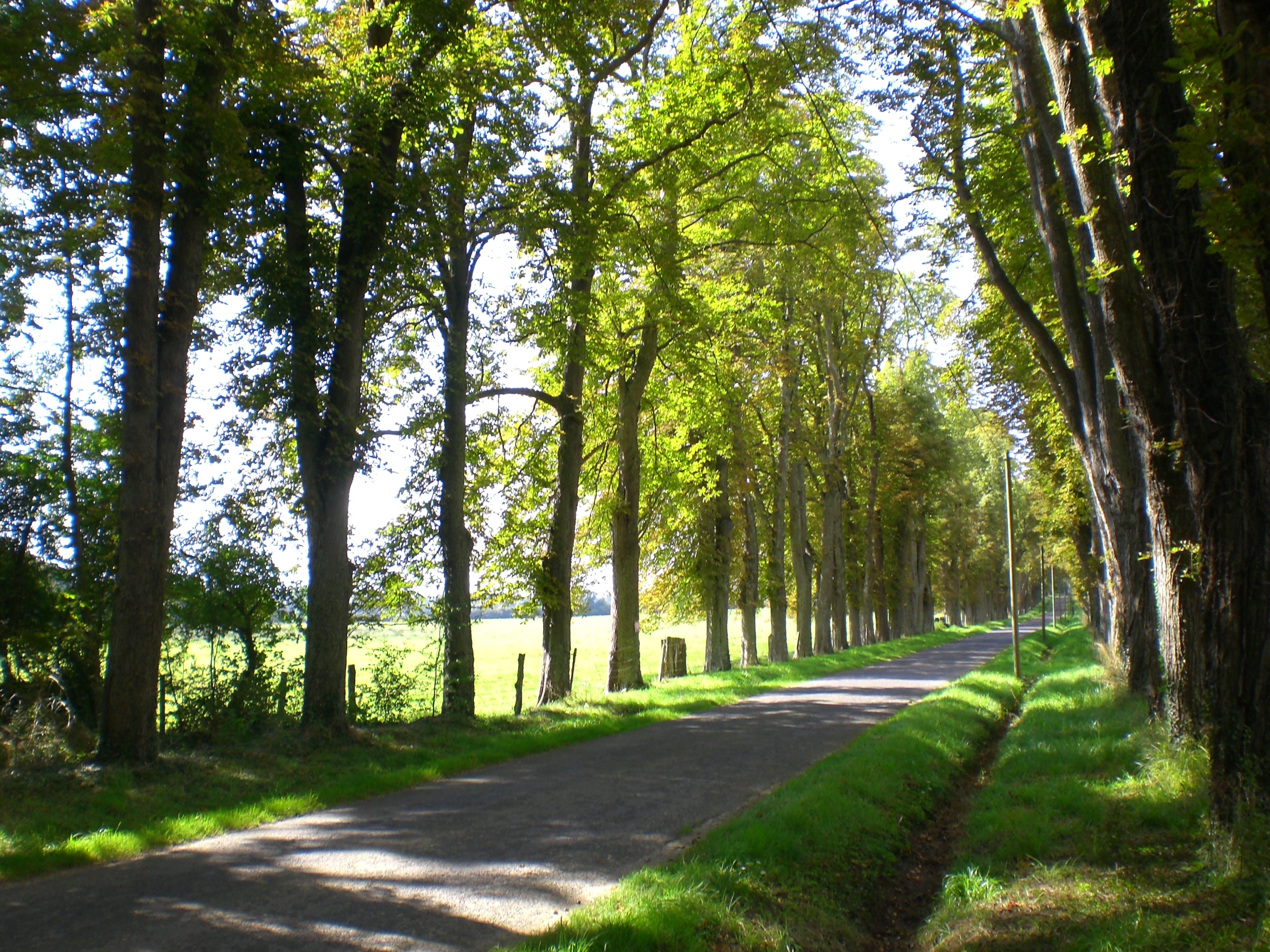|
Mošovce
Mošovce (, ) is one of the largest villages in the historical region of Turiec, currently in the Turčianske Teplice District in the Žilina Region of northern Slovakia. History Many preserved historical buildings are the evidence of the 770 years of its existence. It was mentioned for the first time in 1233 in the deed of donation by King Andrew II. Originally, Mošovce was made up of two settlements: The first one, ''Machyuch'', was located in the area of today’s ''Starý Rad'', and the second one, ''Terra Moys'', which gave the village its current name, occupied the place of the present day ''Vidrmoch''. And it is the name of the second settlement meaning The Land of Mojš, which makes us believe that the whole village once belonged to certain Mr. ''Mojš'', whose name might have been an abbreviation of a compound Slavic name ''Mojtech'', similar to the names ''Vojtech'' or ''Mojmír''. Throughout history the name of the village has undergone many variations ranging from ' ... [...More Info...] [...Related Items...] OR: [Wikipedia] [Google] [Baidu] |
Turčianske Teplice District
Turčianske Teplice District (''okres Turčianske Teplice'') is a district in the Žilina Region of central Slovakia. Until 1920, the district was part of Turóc County, Kingdom of Hungary. Municipalities * Abramová *Blažovce Blažovce () is a village and municipality in Turčianske Teplice District in the Žilina Region of northern central Slovakia. History In historical records the village was first mentioned in 1343. Before the establishment of independent Czechos ... * Bodorová * Borcová * Brieštie * Budiš * Čremošné * Dubové * Háj * Horná Štubňa * Ivančiná * Jasenovo * Jazernica * Kaľamenová * Liešno * Malý Čepčín * Moškovec * Mošovce * Ondrašová * Rakša * Rudno * Sklené * Slovenské Pravno * Turček * Turčianske Teplice * Veľký Čepčín External links Official site Districts of Žilina Region {{Žilina-geo-stub ... [...More Info...] [...Related Items...] OR: [Wikipedia] [Google] [Baidu] |
Žilina Region
The Žilina Region (; ; ) is one of the eight Regions of Slovakia, Slovak administrative regions and consists of 11 districts (okresy) and 315 municipalities, from which 18 have a town status. The region was established in 1923, however, in its present borders exists from 1996. It is a more industrial region with several large towns. Žilina is the region administrative center and there is a strong cultural environment in Martin, Slovakia, Martin. Geography It is located in northern Slovakia and has an area of 6,804 km2 and a population of 688,851 (2011). The whole area is mountainous, belonging to the Western Carpathians. Some of the mountain ranges in the region include Javorníky, the Lesser Fatra and the Greater Fatra in the west, Oravská Magura, Chočské vrchy, Low Tatras and Western Tatras in the east. Whole area belongs to the Váh river basin. Some of its left tributaries are Turiec River (Váh), Turiec and Rajčanka rivers and its right tributaries Belá River, Bel ... [...More Info...] [...Related Items...] OR: [Wikipedia] [Google] [Baidu] |
Veľká Fatra
Veľká Fatra (; also Great Fatra or Greater Fatra; ) is a mountain range in the Western Carpathians in Slovakia. The Veľká Fatra lie to the southeast of the better known Malá Fatra, Malá (Lesser) Fatra mountains and are less developed, as well as being lower. Geology In the geomorphological system, it is a part of the Fatra-Tatra Area. It is situated approximately among the towns of Ružomberok, Harmanec, Turčianske Teplice and Martin, Slovakia, Martin. The Turiec Basin and the Lesser Fatra mountains are situated to the north west of the range and the Low Tatras mountains are in the east. It can be divided into seven parts: ''Šípska Fatra, Šiprúň, Lysec, Hôľna Fatra, Revúcke podolie, Zvolen and Bralná Fatra''. The highest mountain is Ostredok at . Other notable summits of the largest ''Hôľna Fatra'' part are Krížna at and Ploská at , where the main ridge divides into two. The western Turiec Ridge () includes, for example, Borišov at , and the eastern Liptov ... [...More Info...] [...Related Items...] OR: [Wikipedia] [Google] [Baidu] |
Landscape
A landscape is the visible features of an area of land, its landforms, and how they integrate with natural or human-made features, often considered in terms of their aesthetic appeal.''New Oxford American Dictionary''. A landscape includes the physical elements of geophysically defined landforms such as mountains, hills, water bodies such as rivers, lakes, ponds and the sea, living elements of land cover including indigenous vegetation, human elements including different forms of land use, buildings, and structures, and transitory elements such as lighting and weather conditions. Combining both their physical origins and the cultural overlay of human presence, often created over millennia, landscapes reflect a living synthesis of people and place that is vital to local and national identity. The character of a landscape helps define the self-image of the people who inhabit it and a sense of place that differentiates one region from other regions. It is the dynamic ... [...More Info...] [...Related Items...] OR: [Wikipedia] [Google] [Baidu] |
Aesthetic
Aesthetics (also spelled esthetics) is the branch of philosophy concerned with the nature of beauty and taste, which in a broad sense incorporates the philosophy of art.Slater, B. H.Aesthetics ''Internet Encyclopedia of Philosophy,'' , accessed on 15 September 2024. Aesthetics examines values about, and critical judgments of, artistic taste and preference. It thus studies how artists imagine, create, and perform works of art, as well as how people use, enjoy, and criticize art. Aesthetics considers why people consider certain things beautiful and not others, as well as how objects of beauty and art can affect our moods and our beliefs. Aesthetics tries to find answers to what exactly is art and what makes good art. It considers what happens in our minds when we view visual art, listen to music, read poetry, enjoy delicious food, and engage in large artistic projects like creating and experiencing plays, fashion shows, films, and television programs. It can also focus on h ... [...More Info...] [...Related Items...] OR: [Wikipedia] [Google] [Baidu] |
Grove (nature)
A grove near Radziejowice, Poland. A grove is a small group of trees with minimal or no undergrowth, such as a sequoia grove, or a small orchard planted for the cultivation of fruits or nuts. Other words for groups of trees include '' woodland'', '' woodlot'', '' thicket'', and '' stand''. A grove may be called an 'arbour' or 'arbor' (see spelling differences), which is not to be confused with the garden structure pergola, which also sometimes goes under that name. Name Palm grove at Orihuela, Spain. The main meaning of ''grove'' is a group of trees that grow close together, generally without many bushes or other plants underneath. It is an old word in the English language, with records of its use dating as far back as the late 9th century as Old English ''grāf'', ''grāfa'' ('grove; copse') and subsequently Middle English ''grove'', ''grave''; these derive from Proto-West Germanic *graib, *graibō ('branch, group of branches, thicket'), from Proto-Germanic *graibaz ... [...More Info...] [...Related Items...] OR: [Wikipedia] [Google] [Baidu] |
Avenue (landscape)
In landscaping, an avenue (from the French language, French), alameda (from the Portuguese language, Portuguese and Spanish language, Spanish), or allée (from the French), is a straight path or road with a line of trees or large shrubs running along each side, which is used, as its Latin source ''venire'' ("to come") indicates, to emphasize the "coming to," or ''arrival'' at a landscape or architecture, architectural feature. In most cases, the trees planted in an avenue will be all of the same species or cultivar, so as to give uniform appearance along the full length of the avenue. The French term ''allée'' is used for avenues planted in parks and landscape gardens, as well as boulevards such as the Grande Allée in Quebec City, Canada, and Karl-Marx-Allee in Berlin. History The avenue is one of the oldest implements in the history of gardens. An Avenue of Sphinxes still leads to the tomb of the pharaoh Hatshepsut. Avenues similarly defined by guardian stone lions lead to th ... [...More Info...] [...Related Items...] OR: [Wikipedia] [Google] [Baidu] |
Tourist
Tourism is travel for pleasure, and the commercial activity of providing and supporting such travel. UN Tourism defines tourism more generally, in terms which go "beyond the common perception of tourism as being limited to holiday activity only", as people "travelling to and staying in places outside their usual environment for not more than one consecutive year for leisure and not less than 24 hours, business and other purposes". Tourism can be domestic (within the traveller's own country) or international. International tourism has both incoming and outgoing implications on a country's balance of payments. Between the second half of 2008 and the end of 2009, tourism numbers declined due to a severe economic slowdown (see Great Recession) and the outbreak of the 2009 H1N1 influenza virus. These numbers, however, recovered until the COVID-19 pandemic put an abrupt end to the growth. The United Nations World Tourism Organization has estimated that global international tourist ... [...More Info...] [...Related Items...] OR: [Wikipedia] [Google] [Baidu] |
Slovak Republic (1939–1945)
Slovakia, officially the (First) Slovak Republic, and from 14 March until 21 July 1939 officially known as the Slovak State (, ), was a partially-recognized Clerical fascism, clerical fascist client state of Nazi Germany which existed between 14 March 1939 and 4 April 1945 in Central Europe. The Slovak part of Second Czechoslovak Republic, Czechoslovakia declared independence with German support one day before the German occupation of Czechoslovakia, German occupation of Protectorate of Bohemia and Moravia, Bohemia and Moravia. It controlled most of the territory of present-day Slovakia, without its current southern parts, which were First Vienna Award, ceded by Second Czechoslovak Republic, Czechoslovakia to Kingdom of Hungary (1920–46), Hungary in 1938. The state was the first formally independent Slovak state in history. Bratislava was declared the capital city. A one-party state governed by the far-right Slovak People's Party, Hlinka's Slovak People's Party, the Slovak Rep ... [...More Info...] [...Related Items...] OR: [Wikipedia] [Google] [Baidu] |
Kingdom Of Hungary
The Kingdom of Hungary was a monarchy in Central Europe that existed for nearly a millennium, from 1000 to 1946 and was a key part of the Habsburg monarchy from 1526-1918. The Principality of Hungary emerged as a Christian kingdom upon the Coronation of the Hungarian monarch, coronation of the first king Stephen I of Hungary, Stephen I at Esztergom around the year 1000;Kristó Gyula – Barta János – Gergely Jenő: Magyarország története előidőktől 2000-ig (History of Hungary from the prehistory to 2000), Pannonica Kiadó, Budapest, 2002, , pp. 37, 113, 678 ("Magyarország a 12. század második felére jelentős európai tényezővé, középhatalommá vált."/"By the 12th century Hungary became an important European factor, became a middle power.", "A Nyugat részévé vált Magyarország.../Hungary became part of the West"), pp. 616–644 his family (the Árpád dynasty) led the monarchy for 300 years. By the 12th century, the kingdom became a European power. Du ... [...More Info...] [...Related Items...] OR: [Wikipedia] [Google] [Baidu] |
Turóc County
Turóc (Hungarian language, Hungarian, historically also spelled ''Túrócz''), , /''comitatus Thurociensis'', ) was an administrative county (Comitatus (Kingdom of Hungary), comitatus) of the Kingdom of Hungary. Its territory is now in north-western Slovakia, where the corresponding Slovak name Turiec is only an informal designation of the corresponding territory. Geography Turóc county shared borders with the counties of Nyitra County, Nyitra, Trencsén County, Trencsén, Árva County, Árva, Liptó County, Liptó, Zólyom County, Zólyom and Bars County, Bars, situated between the Malá Fatra, Lesser Fatra (Kis-Fátra) and Veľká Fatra, Greater Fatra (Nagy-Fátra) Mountains. The river Turiec River (Váh), Turóc flowed through the county. Its area was 1123 km2 around 1910. Capitals The capitals of the Turóc county were the Sklabiňa, Szklabinya Castle and Turócszentmárton (present-day Martin, Slovakia, Martin; Slovak name until 1950: ''Turčiansky Svätý Martin'') ... [...More Info...] [...Related Items...] OR: [Wikipedia] [Google] [Baidu] |




